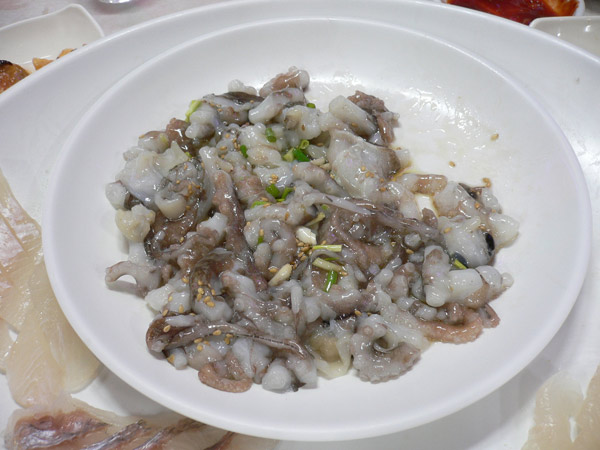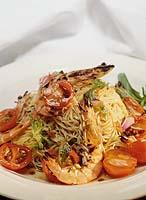The Origin
Originally hailed in the Mediterranean as a celebrated seafood delicacy.
The cuisine
A very common cuisine particularly in Korea, Sannakji is basically a variety of hoe or small octopuses that are plucked from a water tank and served directly to the dining table. The raw small octopuses are cut into small pieces and offered instantly, usually lightly seasoned with sesame and sesame oil. However, the pieces are generally still squirming on the plate. People who consume live octopus need to be extremely careful while eating since the suction cups on an octopusâs arm pieces remain quite a lot active when served as a cuisine. The Korean food, however, comes with the octopus head been cut off beforehand â leaving the tentacles move naturally.
Quite popular as an eatery, the live octopus needs to be chewed all the way before swallowing so that the tentacles do not end up playing in the mouth. Some restaurants also prepare some side-dishes for the live octopus â wrapping it along with the veggies in Korean chili paste being one of them.

The wacky tinge
Tossing down a live octopus is definitely a challenge not only mentally but also physically. The whole idea of chewing the live tentacles looks quite off the wall â throwing a challenge of fighting with your food first and then getting to savor its weird yet apparently pleasant taste. Also, since you are eating something thatâs still alive, the cuisine renders heavy risk as the octopusâs tentacles try to attach themselves to the inside of your cheek, your teeth, surface of your tongue or even your windpipe in order to search for escape.
Ingredients
1lb octopus, either small or large
Salt and pepper
Chili flakes (for side-dish if you want)
Vegetables (if you want to have the octopus wrapped in)
Sesame oil
Process
First, rinse the octopus well with the running water for it to get clean. Using a pair of scissors cut the live octopus into pieces with appendages wavering and dangling. Put the cut pieces, with suction cups and all, onto a serving dish with sesame oil. Here, you can also sprinkle salt and pepper over it for some flavor. Nevertheless, the cuisine can even be eaten with the servings of chili. After putting the octopus in a plate, you can cut some fresh vegetable and wrap the live tentacles around the vegetable piece and have them dipped in the chili paste â which can easily prepared by adding a pint of water in about a handful of green or red chilies to grind them properly.
Health benefits
Although eating live octopus may sound bizarre and quite adventurous with several risks involved, the cuisine has been considered as a valued part of Koreaâs seafood delicacy for centuries. Overlooking the fact the tentacles quite a lot swirl and squirm on a plate and can be a choking hazard if latched onto the mouth, the dish is looked upon as a vitality enhancer and a health food.



